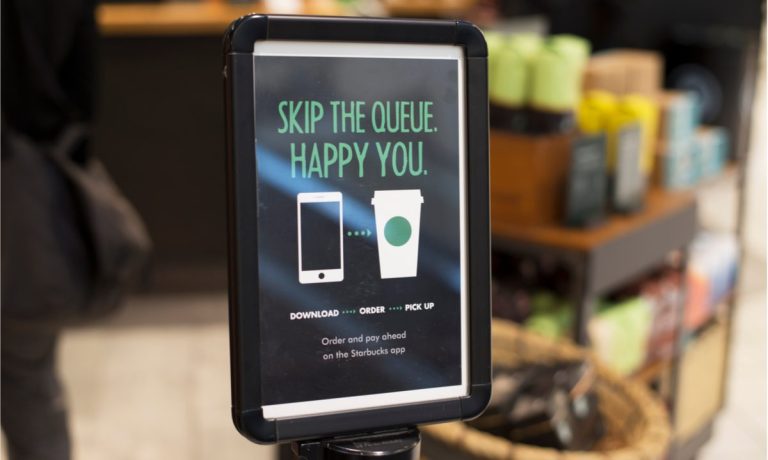
Across the restaurant industry, businesses have been shifting their focus away from digital ordering channels and toward the in-store experience throughout this year, but major brands are keeping their eyes on the digital prize and investing in the future of mobile ordering channels.
Take, for instance, Starbucks, the largest restaurant company in the world by revenue. On Tuesday (Sept. 13), the coffeehouse chain shared its “Reinvention” plan, which includes, among other considerations, a focus on the digital experience, which includes opening more mobile-order-focused stores.
The plan cites “tremendous opportunity to further diversify and expand formats” for its stores in light of the changes in how consumers order, including more “pick up, delivery-only and drive-thru only locations,” with the brand specifically highlighting the Mobile Order & Pay channel as one that appeals to customers’ new digital expectations.
Starbucks is far from the only quick-service restaurant (QSR) brand rethinking its stores in light of this shift. Last month, Wendy’s announced a new design dubbed Global Next Gen, which includes pickup shelves for mobile orders and parking spaces for these mobile customers, among other design updates.
“To accelerate our business and expand our footprint across the globe, we must consistently meet the needs of our customers however they chose to engage with Wendy’s, whether that’s through a digital platform or in the drive-thru,” Wendy’s President and CEO Todd Penegor said in a statement.
See also: Wendy’s Announces New Off-Premise-Centric Store Design
Meanwhile, Restaurant Brands International — the parent company of Burger King, Tim Hortons, Popeyes and Firehouse Subs — is turning its focus to the app experience itself. On a call with analysts last month, the company shared how it is updating the mobile experience.
“This quarter, we moved the Popeyes app to a more modern codebase, improving loading times by up to 52% thus far — a statistic that, importantly, is highly correlated to app usage and orders,” Chief Operating Officer Joshua Kobza said. “We’re planning to roll out the similar speed upgrades to Burger King and Tim Hortons in the coming months.”
Related news: Burger King, Popeyes Parent Cuts App Load Times 52% to Boost Digital Orders
Yet for all these investments, the restaurant industry overall has actually been falling behind in mobile ordering throughout 2022 relative to 2021, as is revealed by data from this year’s edition of PYMNTS’ Restaurant Readiness Index, which drew from a survey of more than 500 U.S. QSR and full-service restaurant managers.
Read more: More Than Half of Restaurants Depend on Digital Sales, Despite Uptick in On-Premises Orders
The report found that restaurants’ aggregated feature implementation score — a measure that accounts for feature availability in the context of average value of time, page submissions and number of payment methods through all channels for each restaurant — for mobile app ordering fell five points from 57% to 52% between September 2021 and April 2022.
In the same period, the share of restaurants offering the ability to order via their own mobile apps fell 11 points from 61% to 50%.